Netherlands
Photos
21 Photos
Per Page:
Filter Categories
All
Filters
This satellite photo shows Northwest Europe. Visible are the Republic of Ireland (top leftmost), the United Kingdom (top left), France (middle left), Belgium (middle), the Netherlands (top middle), Germany (right), Denmark (top right), Luxembourg (between France, Germany, and Belgium), Switzerland (bottom middle), Italy (bottom middle), and Austria (bottom right); the latter three all cloud covered. Image courtesy of NASA.
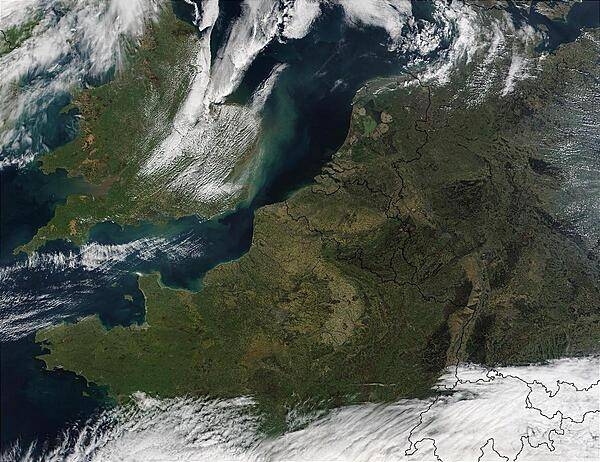
Along the southern coast of the Netherlands, sediment-laden rivers have created a massive delta of islands and waterways in the gaps between coastal dunes. The area in this false-color satellite image is extensively farmed, giving the photo its patchwork look. The Dutch have built an elaborate system of dikes, canals, dams, bridges, and locks to hold back the North Sea because of rising sea levels and devastating historic floods. The Dutch coastline has changed significantly over time due to these floods, such as the 1134 storm that formed the Zeeland archipelago when water covered massive swaths of land. Other major floods include St. Lucia's Day flood in 1287, St. Elizabeth's Day flood in 1421, and a massive flood in 1953 that sparked the building of the Delta works system in place today. The Delta works will be under stress in coming years as sea levels continue to rise. Image courtesy of USGS.
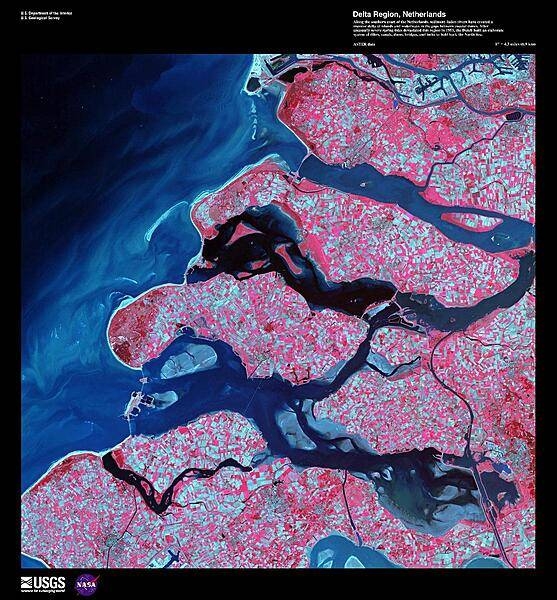
Distinctive architecture along an Amsterdam street.
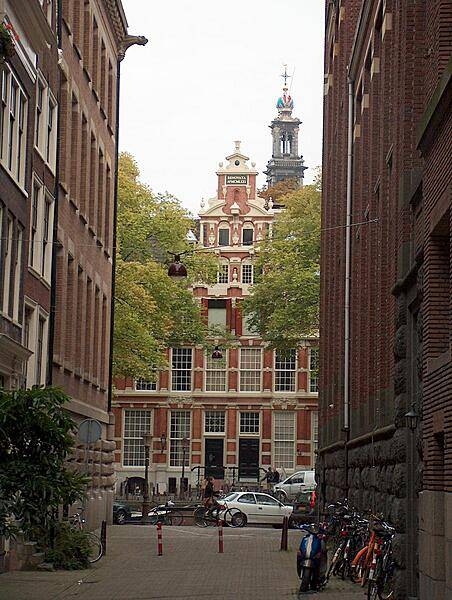
Bicycles are a ubiquitous form of transport in Amsterdam.
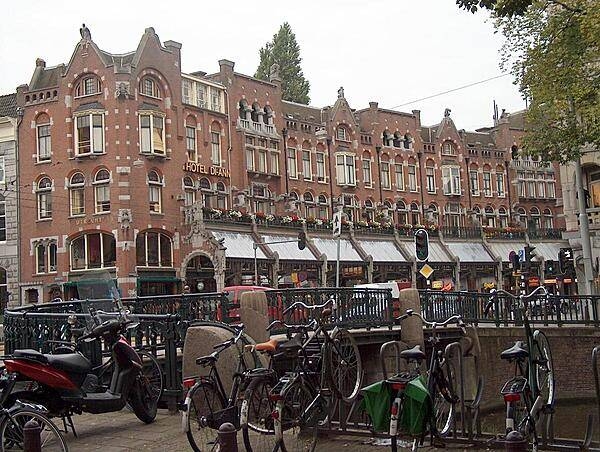
The spire of the Westerkerk (85 m) is the highest church tower in Amsterdam. The edifice was completed in 1638.
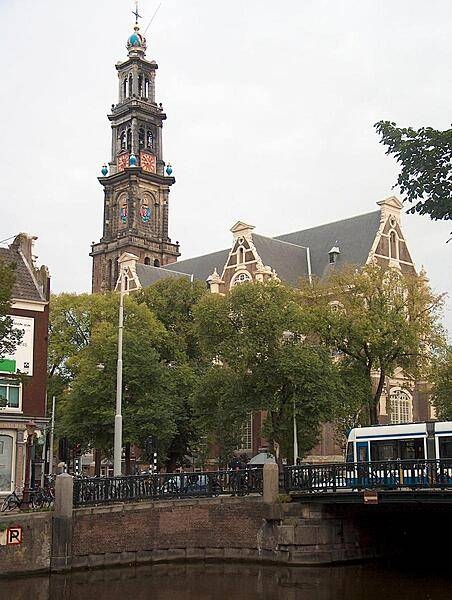
Amsterdam has 165 canals, but visitors are especially fond of the prominent ones in the city’s medieval center. Lined by 17th and 18th century houses, these canals form a half circle around the center of town. Development of the canals eventually drained the swampland of Amsterdam, allowing the development of a homogeneous urban area - the first model of large-scale town planning in the 19th century.
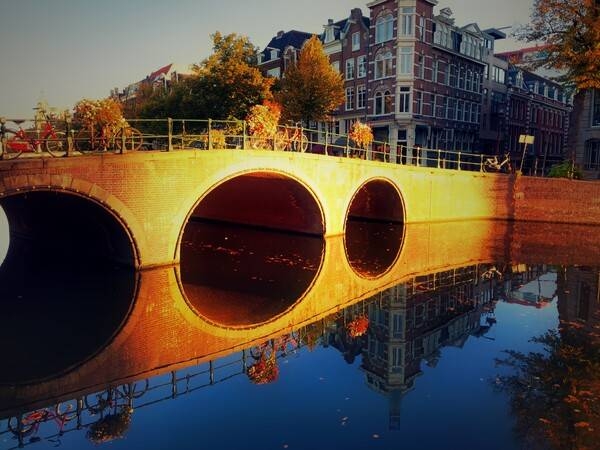
Lined up tourist boats on an Amsterdam canal resemble a row of shoes. The floating Tulip Museum is in the background.

The floating Tulip Museum in Amsterdam.
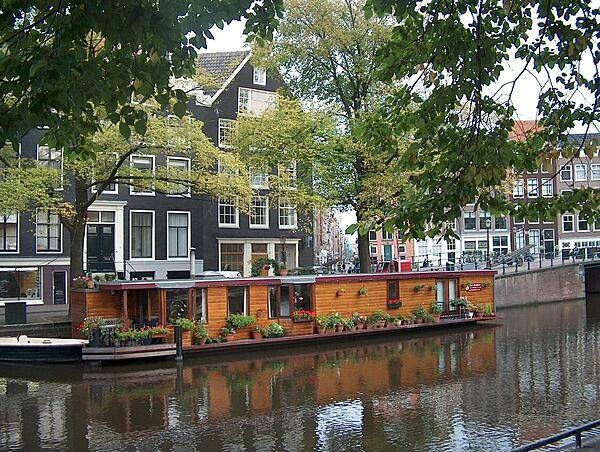
Modernized facades on older buildings in Amsterdam.

The Astoria building in Amsterdam, built 1904-05, is indicative of a more reserved style of Art-Nouveau (Jugendstil) that came to be known as "New Art" (Nieuwe Kunst). Though difficult to distinguish, typical Art-Nouveau engravings appear in the gray stone around the doorway.
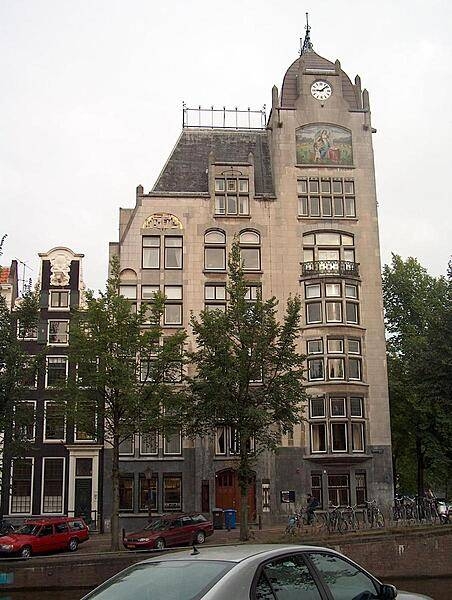
View along Nieuwezijds Voorburgwal, a street (formerly a canal) in the heart of Amsterdam.
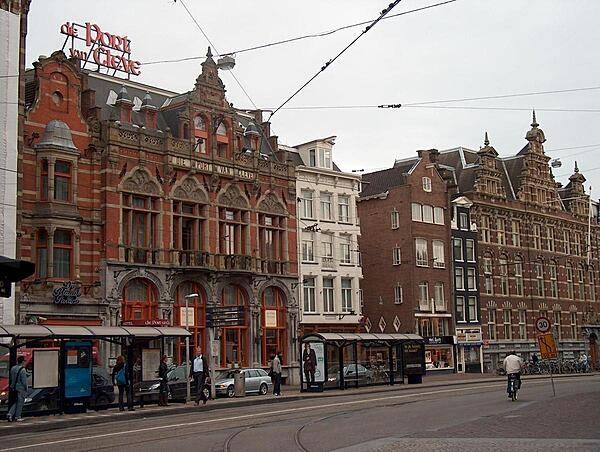
The Amsterdam Centraal railway station overlooks the city's harbor.
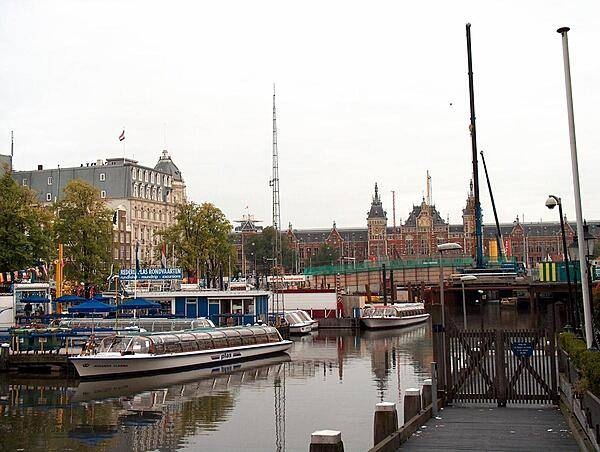
Page 01 of 02